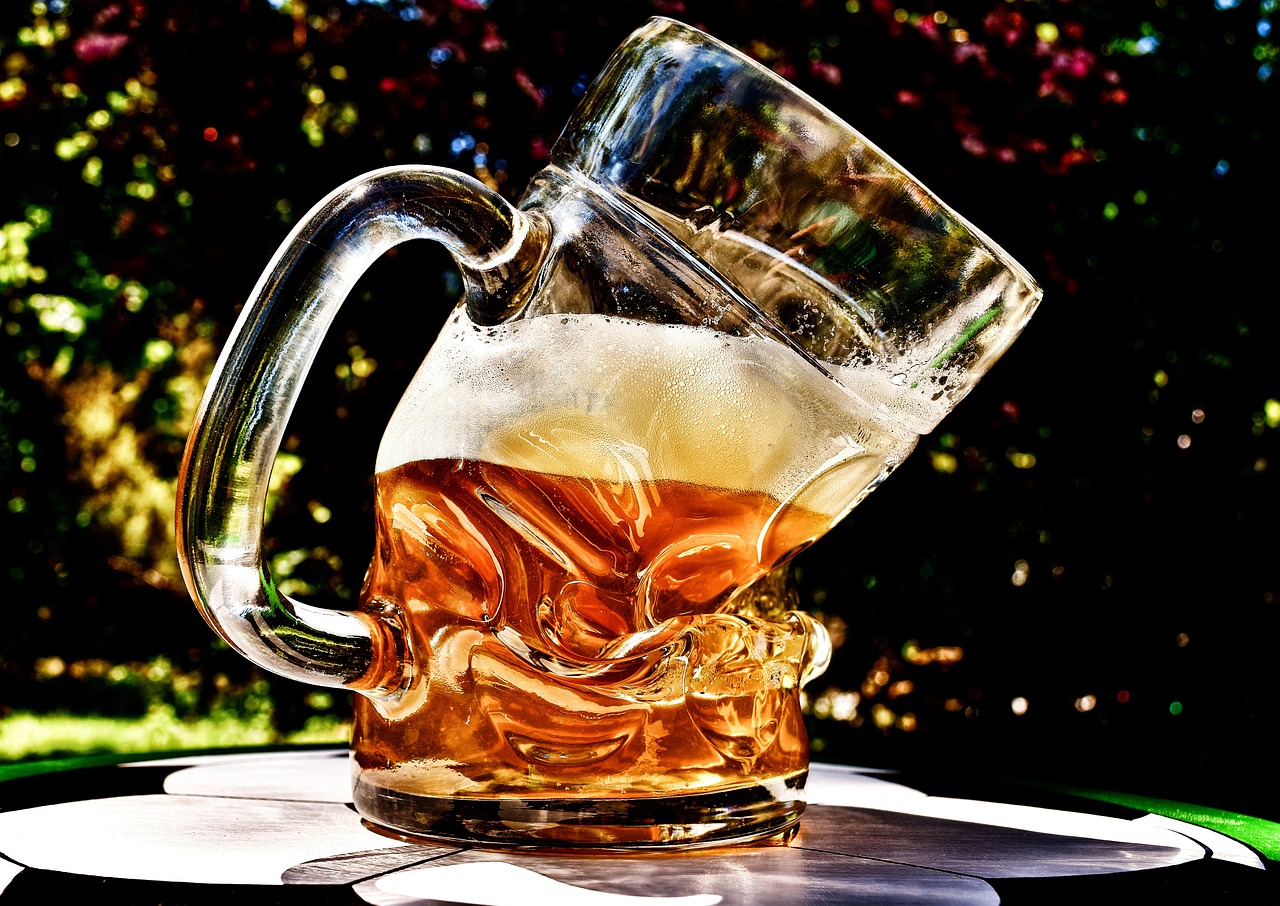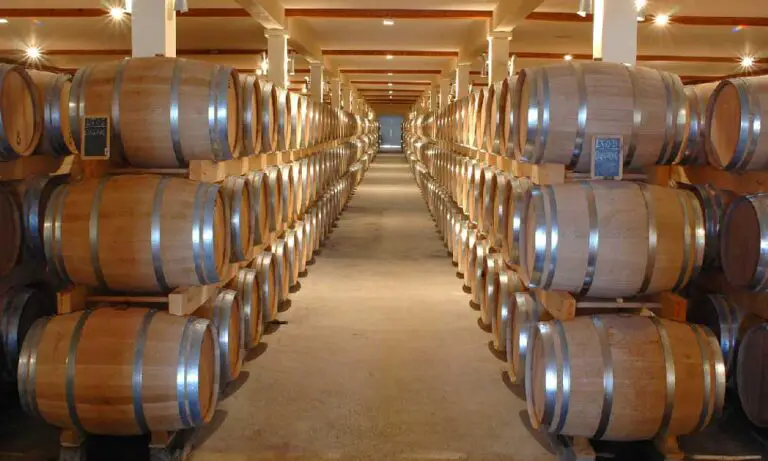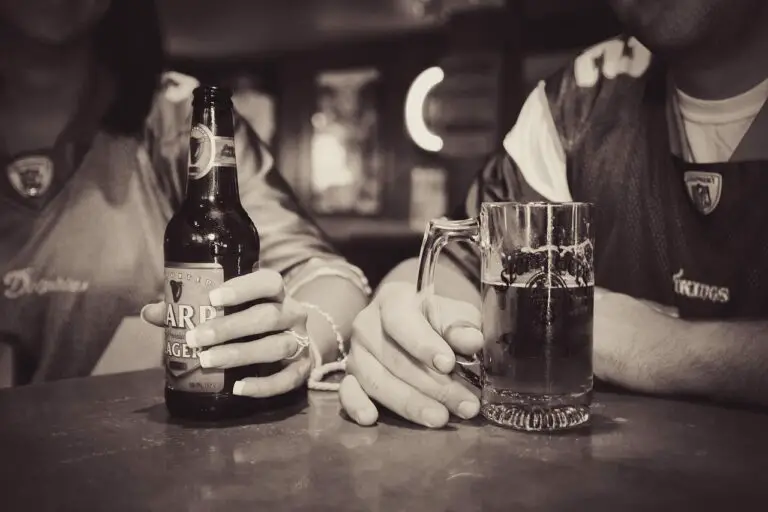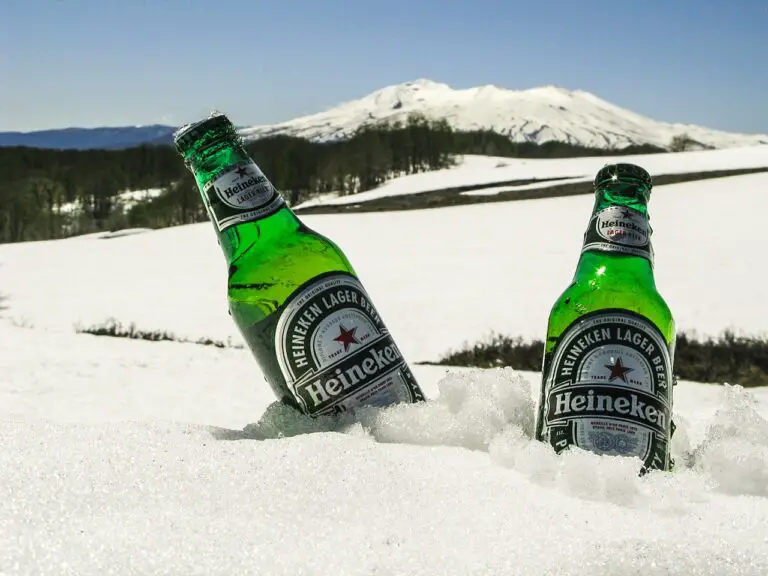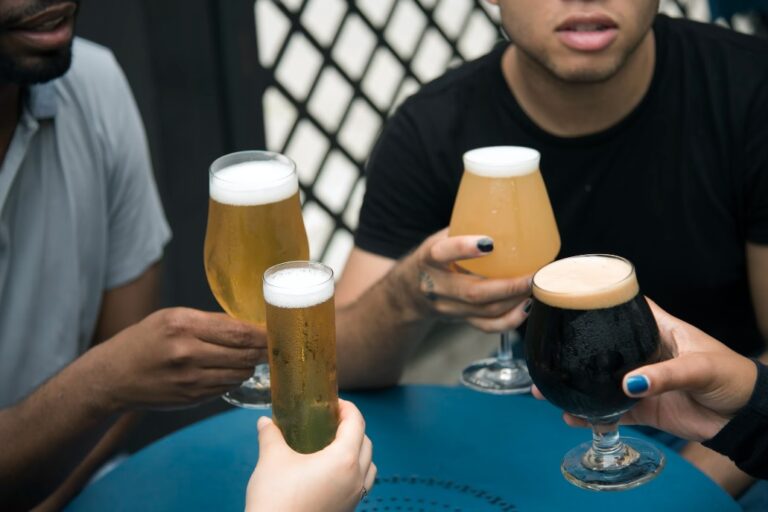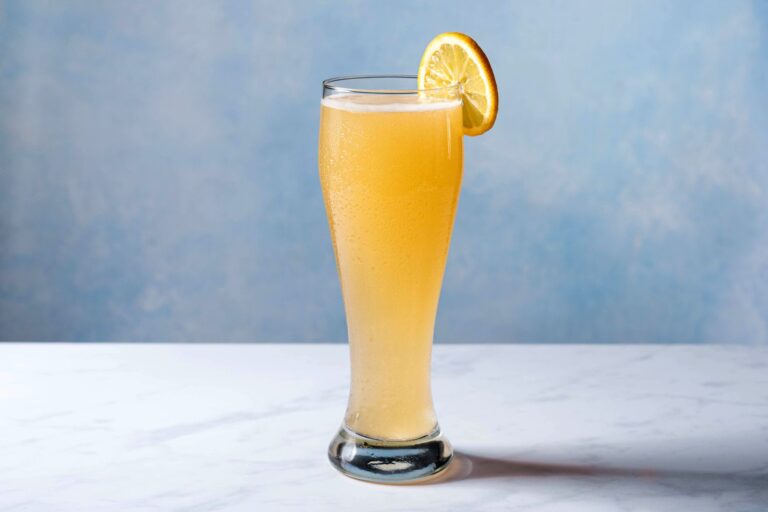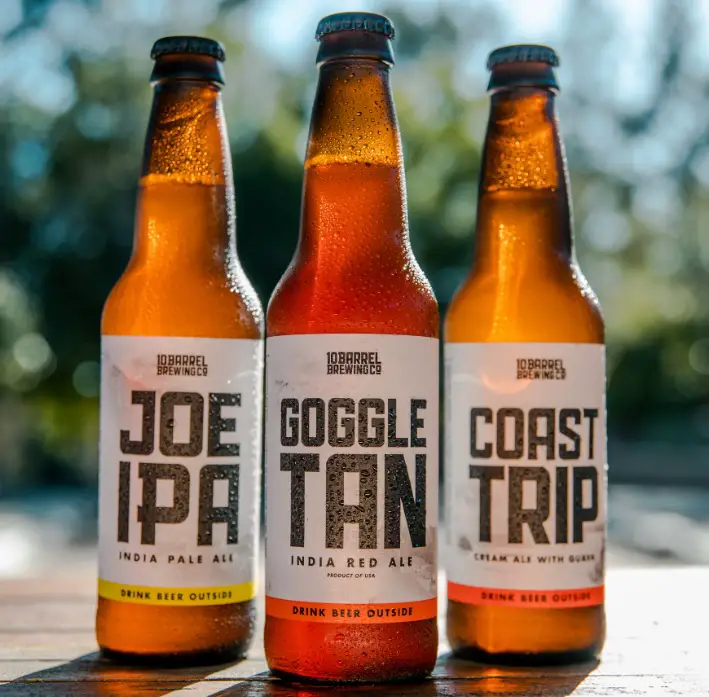Where Is Warm Beer Popular?
Warm beer is a thing that might send shivers down the spines of beer enthusiasts, but it holds a special place in the hearts of many across the globe. While cold beer (and even frozen) remains the standard in most parts of the world, certain regions have embraced savoring their brews at warmer temperatures: Britain, Belgium, Germany, Scandinavia, and even India. This unique preference for warm beer is not merely a matter of taste but is often rooted in historical traditions and climatic considerations. This short guide delves into the intriguing world of warm beer, discovering where it finds favor and why.
So where is warm beer popular? Let’s take a closer look:
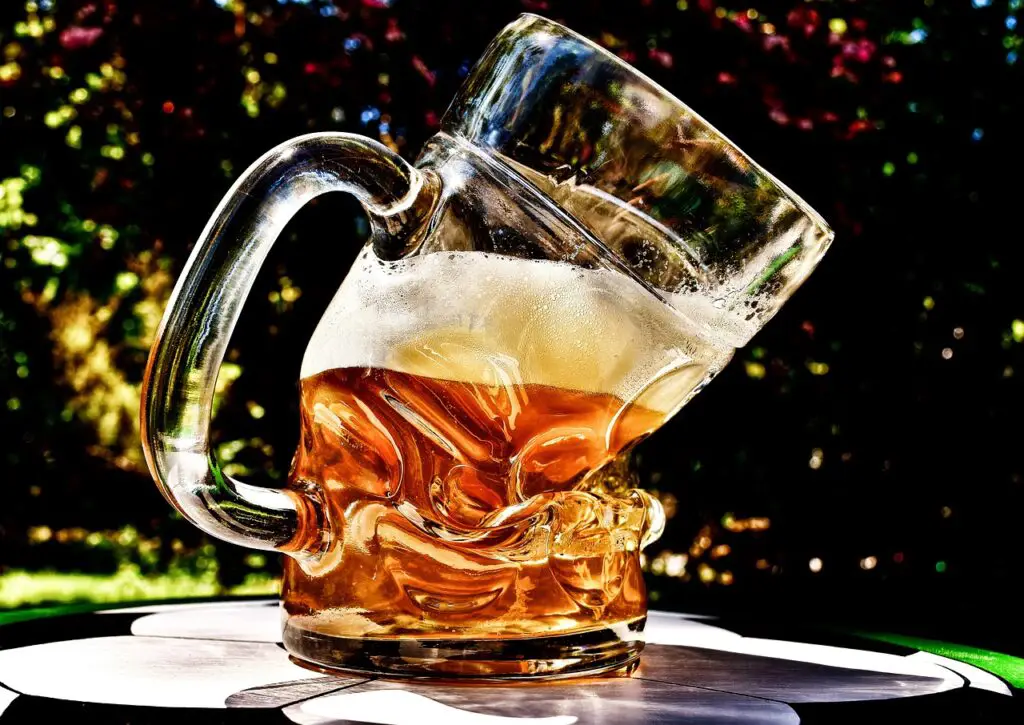
#1 – United Kingdom – Britain’s Love for Warm Beer
When it comes to appreciating the nuances of beer, few places rival the United Kingdom. In the land of rolling hills, cozy pubs, and centuries-old brewing traditions, the preference for warm beer isn’t just a quirk; it’s a cherished tradition. It’s what the British do.
Temperature Matters: The Art of Serving British Beers
The British take their beer seriously, and the temperature at which different styles are served is a crucial part of the experience. British beers and ales are often enjoyed at cellar temperature, which typically falls in the range of 50-55°F (10-13°C). This temperature range allows the complex flavors and aromas of the brews to shine fully. Here’s a detailed list of some popular British beer styles and their preferred serving temperatures:
- Real Ales (Cask Ales): Real ales are the pride of British brewing. These unfiltered, naturally carbonated beers are typically served at a slightly warmer temperature, around 50-55°F (10-13°C). This serving method brings out the rich, malty flavors and allows drinkers to savor the beer’s subtle complexities.
- Bitters: Bitters are a staple of British pub culture, and they are typically served at cellar temperature, around 50-55°F (10-13°C). This serving temperature balances the malt sweetness and hop bitterness that defines this beer style.
- Porters and Stouts: British porters and stouts, including the iconic Guinness, are often served at a slightly warmer temperature than lagers, around 50-55°F (10-13°C). This allows the roasted malt flavors to develop, delivering a smoother and richer drinking experience.
- Barleywines: These strong ales are typically served at cellar temperature or slightly warmer, around 55-60°F (13-15°C). The elevated temperature accentuates their robust maltiness and complex flavors.
National Pride in Serving Beer at the Right Temperature
British people take immense pride in serving their beers and ales at the correct temperature. Pubs across the UK strive to maintain the ideal conditions for their real ales, ensuring they are neither warm nor cold.
In Britain, it’s not just about the beer itself but the entire experience. The nation’s commitment to serving beer at the perfect temperature is a reflection of its deep-rooted appreciation for the art of brewing. It’s a tradition that has stood the test of time, allowing both locals and visitors to savor the rich tapestry of flavors woven into each pint of British beer.
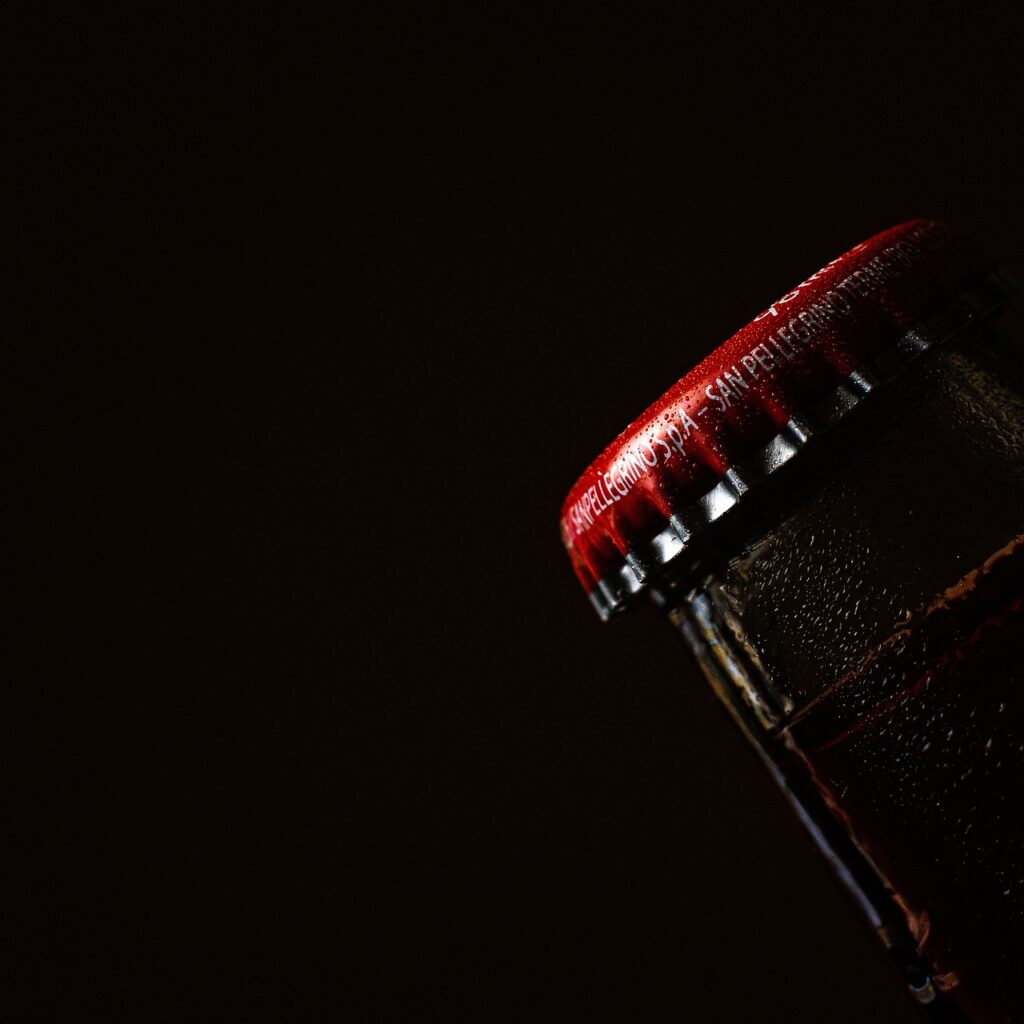
#2 – Temperature and Belgian Ales: A Delicate Balance
Belgian ales, renowned for their complexity and unique flavors, are often enjoyed at cellar temperature, typically ranging from 50-55°F (10-13°C). This temperature range allows these brews to express their intricate aromas and taste profiles fully. Here are some prominent Belgian ales and beers and the temperatures at which they are traditionally served:
- Trappist Ales: Trappist ales, brewed by Trappist monks in Belgium, are a source of pride for the country. Varieties such as Chimay and Orval are typically served slightly warmer than lagers, around 50-55°F (10-13°C). This serving temperature accentuates the fruity, spicy, and yeasty notes that characterize these ales.
- Lambic and Gueuze: Lambics, unique to Belgium, are often served at cellar temperature, around 50-55°F (10-13°C). These spontaneously fermented beers, known for their sour and funky flavors, benefit from a slightly warmer serving temperature that enhances their complexity. Gueuze, a blend of young and old lambics, is enjoyed in a similar temperature range.
- Dubbel and Tripel: Belgian dubbel and tripel ales, which are strong and often have elevated alcohol content, are also served at cellar temperature, around 50-55°F (10-13°C). This allows the interplay of malty sweetness, spice, and fruity esters to shine through.
- Saisons: Saisons, or farmhouse ales, are known for their refreshing and spicy character. They are typically served at around 50-55°F (10-13°C) at cellar temperature to bring out their herbal and peppery notes.
- Belgian Strong Ales: Beers in this category, like Duvel and Delirium Tremens, are served at slightly warmer temperatures, around 55-60°F (13-15°C). The elevated temperature enhances the complexity of these high-alcohol brews.
The Distinct Belgian Beer Culture
Much like the British, Belgians take pride in their beer culture and the meticulous care with which their brews are served. The emphasis on proper serving temperatures is a testament to their dedication to preserving their world-renowned beers’ unique characteristics and flavors. Whether you’re sipping a Trappist ale or savoring a lambic, the Belgian tradition of enjoying beer at cellar temperature is an integral part of the rich tapestry of Belgian beer culture.
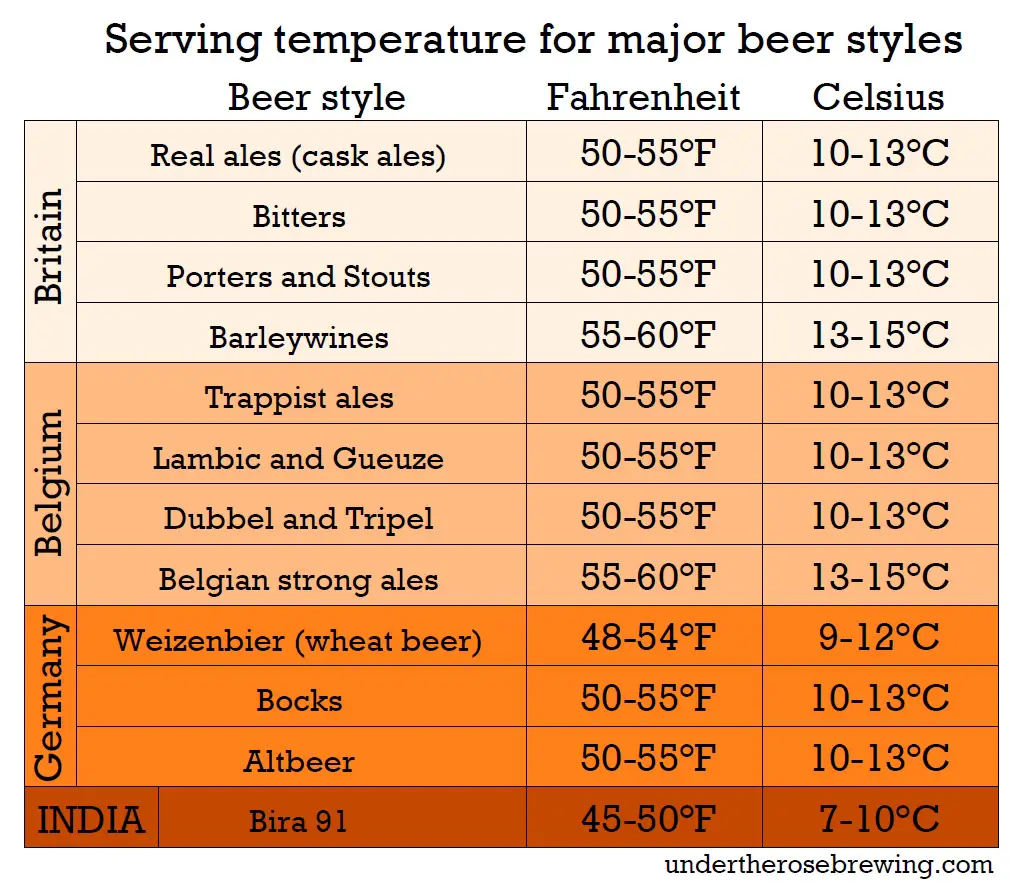
#3 – Germany – The Full Spectrum of Flavors
Lagers: Germany’s Cold Beer Tradition
German lagers, including the ubiquitous Pilsners and Helles, are traditionally served chilled. These beers are typically enjoyed at temperatures ranging from 42-48°F (5-9°C). The crispness and refreshing qualities of lagers are best appreciated when they are icy cold. This tradition aligns with the global preference for a cold, refreshing beer on a hot summer day.
Warmer Temps for Specific Styles
However, not all German beers are served at these colder temperatures. Some beer styles are intentionally served at slightly warmer temperatures to accentuate their unique characteristics:
- Weizenbier (Wheat Beer): German wheat beers, including Hefeweizen and Dunkelweizen, are often served at cellar temperature, approximately 48-54°F (9-12°C). This allows the fruity, spicy, and yeasty notes to develop fully, creating a more complex and satisfying drinking experience.
- Bocks: German bock beers, such as Maibock and Doppelbock, are known for their strong malt character. These beers are typically served at temperatures ranging from 50-55°F (10-13°C) to showcase the rich, malty sweetness and toffee-like flavors.
- Altbeer: Altbeer, a traditional German ale, is typically served at cellar temperature, around 50-55°F (10-13°C). This temperature allows the balance of malt and hop flavors to shine through.
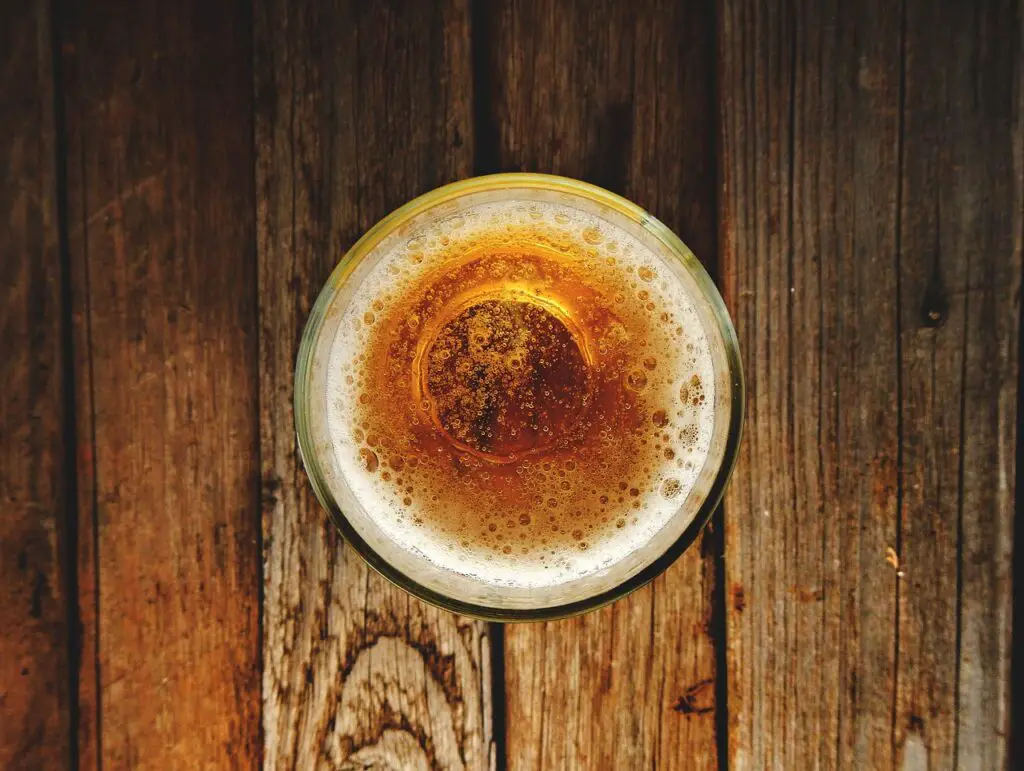
#4 – Warmer Beer in Scandinavia
Warding Off Winter Chill
Scandinavians have long understood the warming qualities of beer. Enjoying a beer at slightly elevated temperatures during the frigid winter months provides comfort and warmth. The practice isn’t about drinking hot beer but serving it at a temperature that allows the body to absorb it as a source of warmth. Beer at cellar temperature, around 50-55°F (10-13°C), offers a respite from the bone-chilling cold and complements hearty winter meals.
A Cozy Tradition
In Scandinavian countries, cozy gatherings in homes and local pubs are everyday during winter. During these gatherings, beer, often at cellar temperature, becomes a comforting companion. Whether enjoying a rich, malty ale or a robust stout, the slightly warmer beer helps combat the elements and fosters a sense of togetherness.
#5 – India – A Surprising Place To Drink Warmer Beer
In a country known for its scorching temperatures, India may not be the first place that comes to mind when thinking about warm beer. However, there is an exception to this rule in the form of the popular Bira 91.
Bira 91: Breaking the Cold Beer Mold
Bira 91, an Indian craft beer brand, has gained prominence for challenging the country’s conventional preference for cold beer. While the climate certainly favors colder beverages, Bira 91 has introduced a unique twist by serving their beer at a slightly warmer temperature than the typical lagers.
The brand’s flagship offering, the Bira 91 White Ale, is often served at around 45-50°F (7-10°C). This practice allows the beer’s fruity and spicy flavors and cloudy appearance to shine through. By deviating from the norm and embracing slightly warmer temperatures, Bira 91 aims to offer a different beer-drinking experience in India, appealing to those who seek a more diverse and complex flavor profile.
Wrapping It Up
In conclusion, the preference for warm beer, or beers served at slightly elevated temperatures, is a practice deeply rooted in cultural, historical, and climatic considerations. From the cozy pubs of Britain to the diverse beer styles of Belgium and even the unique approach of Bira 91 in India, warmer beer has found its place among beer enthusiasts worldwide. Whether it’s savoring the complexities of ales, enhancing flavors during chilly winters, or offering an alternative beer experience, these regions, and brands have demonstrated that the beer world is as diverse as the cultures that embrace it.

I am a young architect with a passion that goes beyond blueprints… it’s beer! undertherosebrewing.com is more than just a blog, it’s a manifestation of my lifelong dream to explore, read, and learn everything about beer. Join the blog on this unfiltered and genuine adventure into the heart of beer culture. Cheers!

